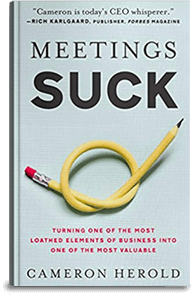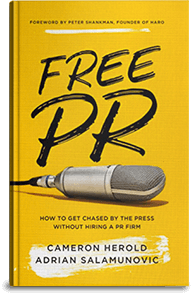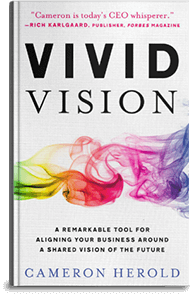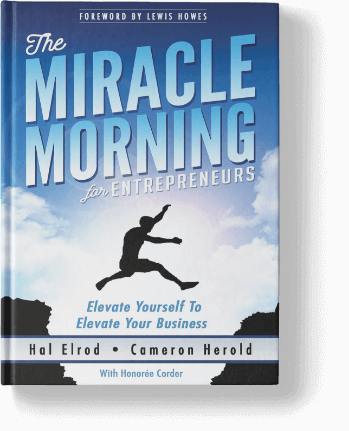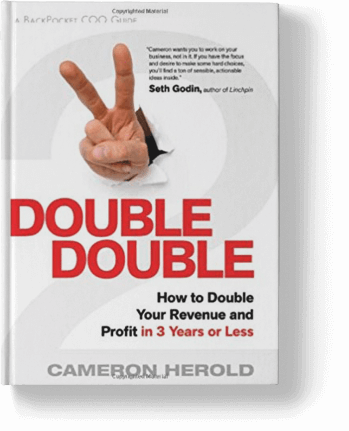How do you market your business? Where do you start? Which channels are right for you? Are you direct-to-consumer or brick and mortar?
There are so many considerations you need to make when honing in on marketing your business. Most entrepreneurs don’t have the time to commit to learning and mastering each marketing channel to produce a functioning integrated full-funnel strategy.
So, we decided to do a breakdown of how most channels work and how to leverage them for your business. You may want to make the decision to outsource or stay in-house when it comes to managing your marketing operations, but the least you can do is be informed.
Search Engine Optimization (SEO)
If you talk to a lot of people they’ll tell you organic search is a great way to capitalize on a “free” marketing channel. Any experienced SEO expert will tell you that this misnomer can be dangerous for an entrepreneur.
It takes a lot of investment to rank for your target keywords. SEO can be broken down into two major components:
On-Page Optimization
There are hundreds (if not thousands) of well thought out pieces online about how to do this effectively. It really breaks down to some simple tasks to make sure your site is easy to crawl and easy to use.
Major search engines use bots to crawl your site and make sense of the contents, structure, and speed. If you’re interested in this, you can take a dive into the deep end with technical SEO.
However, for the person who’s strapped for time and doesn’t have the bandwidth to learn an entirely new discipline that requires advanced technical knowledge, you can achieve your desired impact by keeping your website clean and simple.
I can’t stress enough that you should not overcomplicate things. Here are the tenets you should follow religiously when optimizing a page for search:
- Keep your URLs simple and plug your main target keyword into the slug.
- Use descriptive title tags for your pages that can capture attention and keyword traffic.
- Properly organize your H1, H2, H3…tags. They should be used in ascending order with H1 being the page title (there should only be one of these) and think of them as a hierarchy of importance.
- Make sure your images are lean, have descriptive titles, and provide an alt description. A good rule of thumb for this is to think about how you would describe the image to a blind person.
- Use authoritative sources in your content wherever possible. If you link out to trusted sources, your content looks well-researched and provides a better user experience.
- Link to your own content where it’s relevant. This one’s probably pretty self-explanatory.
Off-Page
This is probably the trickier of the two to master (in my personal opinion). You’ve optimized everything in your power and your site is firing on all cylinders, great!
Now welcome to the Wild West. It’s impossible to downplay the importance of actually putting in the work at this stage.
It’s difficult to put together a definitive list of things you should do here, but here are some best practices for getting your pages to actually rank on the front page–and hopefully claim the coveted #1 spot:
- Keyword research is where you should always start. You don’t know what you’re optimizing for until you identify some high-value keywords that you want to rank for.
Think of your target keyword as a topic and your goal is to create topic to make your site the expert resource for anyone doing a search for that topic. Build that content.
I use the term “build” because it requires a level of strategy and architecture to build good content that has the ability to rank.
- Now, you need to show the search engines that your page(s) should be seen as the preeminent authority on the topic of your choice by getting other sites to link back to your page(s).
While you may think what you’ve built is magnificent and should rank on its own, this is seldom the case. Each link back to your page(s) is like a vote of confidence and other sites are casting a vote for your page with each backlink. The more influential the site, the better.
Don’t overdo it! Make sure the links back to your page(s) are diverse because the same site raising its hand multiple times starts to diminish the influence it has and could even lead to negative consequences in some extreme cases.
Search Engine Marketing (SEM)
Much like SEO, SEM starts with keyword research, but it requires a very different type of investment. In the SEM landscape, you win with great copy and great creative (where applicable).
Luckily, there are a number of tools to help build out your keyword strategy, Google even has its own very powerful tool. Your keywords then fall into two buckets:
- Branded Keywords
Branded keywords are any keywords that are relevant to your brand specifically. They are your brand name, your unique value proposition, or any other term that is specific to the core of your brand.
It’s important to advertise on branded terms because your competitors will attempt to steal your traffic (a segment that is likely to become customers) to convert on their sites. You want to own all of your real estate.
- Non-Branded Keywords
Non-Branded terms are where you have to get creative. You can even use competitors to help you figure out what to target.
These are the keywords that you have to be strategic about based on your campaign goals. You have to determine whether you’re aiming for conversions or brand awareness. Each will come with somewhat different guidance.
For a conversion goal, you’ll want to target high-value keywords with strong purchase intent. You’ll have to use a bit of finesse and analyze the keywords based on the other results showing up for that search.
Are the results of products and services? If so, there’s a good chance that the search engine has correlated this keyword with purchase intent.
For a brand awareness goal, you’ll want to advertise on high traffic keywords that likely have more information search intent. For these keywords, you should use the content as your value-add for the user.
Once you have this down, you’ll want to set a budget. Once you know how much you can spend you’ll be able to determine how much you can test and how far and long your campaign can stretch.
Now you need something to test. Creating assets for your campaign is an important stage in this process and should be given all of the same consideration you gave to choosing your keywords.
You’ll want to write engaging copy that is very specific to your keyword and what you want the user to do when they read it. And your landing page should be in sync with the messaging you used in your ad copy. Providing a consistent experience is key.
Social Media
Social media is an interesting beast. It doesn’t seem difficult from the outside, but when you dig in you see all of the intricacies that make a successful organic digital presence.
The most important aspect of being successful on social media is authenticity. I don’t mean staying true to yourself, but rather staying true to the brand voice and persona you’ve created for your business.
Don’t be cookie-cutter. You don’t have to be over the top either, to do well you have to know the landscape and how to take advantage of each platform:
- Facebook – A combination of visual and text that allows for more freedom to show who you are as a brand. Post updates, events, and even live stream.
- Instagram – Visual-dominant, Instagram is all about using images to communicate your message. Capture attention on Instagram with stunning creative. Make your images compelling with minimal text.
- Twitter – Mostly text-based, but twitter is a great platform to shine and show your personality. Be original, be witty, be provocative, just don’t be boring. Enhance your tweets with images, gifs, and videos or attach yourself to a larger conversation.
- Snapchat – Tell your story with strong video narratives.
Affiliate
Affiliate marketing is performance-based marketing where an affiliate earns commissions for driving sales or transactions to an advertiser’s website. An affiliate can be anyone that has a web presence with the ability to generate sales or traffic to an advertiser’s website.
For example, you can have blogger writing content on parenting and being a mother and they and within one of their pieces of content, they link to your bottle company’s website using a custom URL. If someone clicks that link and makes a purchase, the blogger gets a commission.
An affiliate can also be a social media influencer. For example, Kim Kardashian posts on Instagram about a dietary supplement that she loves. She can then get a percentage of every sale that’s attributable to that link.
Affiliate compensation can be structured in a lot of interesting ways based on your goals, budget, and relationship with the influencer you’re working with. That credit could be a commission; it could be a cost-per-click. It could be a flat amount per sale.
At the end of the day, affiliate marketing gives advertisers the ability to generate sales or leads on a commission or performance basis. A concept that is low-risk and potentially high reward for the brand if they pair with the right content creator.
When email marketing is done well, it can have an incredible impact on your company. Great campaigns can yield up to $42 for every dollar spent. That’s some serious ROI!
I won’t bore you with the basics here because most of us have sent and received plenty of emails. You probably checked your email in the middle of reading this.
Here are a few points to consider when you’re putting together an email campaign:
- Purpose – What’s your goal for this campaign? There are usually two broad goals of sending emails to a list, converting contacts into customers or retaining existing customers.
- Message – Your message needs to be clear and concise. Are you promoting products or content? What’s the best way to do that?
Shorter is better. Most people won’t scroll through a long email. Keep it to the point, but make it interesting. Email inboxes are some of the noisiest spaces in marketing so you have to stand out to get opened.
- Personalization – With the advancement of automation, segmentation, and targeting technology it’s easier than ever to create emails that are tailored to a specific audience at scale.
Tools like Hubspot allow you to create automated workflows based on certain criteria that are met when a user interacts with your business at online touchpoints.
A quick example being, a return customer visits your website and looks at your blog on cold remedies. You can set a workflow to trigger an email serving them a list of products or a content upgrade that allows them to either get more in-depth or buy what they need.
Content Marketing
Content marketing often gets swept under the rug, but it can give a big boost to the tangibles like leads and site traffic and the intangibles like brand awareness and thought leadership.
You have to have a strategy. Content marketing doesn’t really work unless you have a plan. The goal with content marketing is to build content that can be leveraged across channels and along every step of the sales funnel.
It actually affects just about every other channel because all marketing relies on content in some form or another.
Here are the steps you should take to build out a great content strategy:
- Keyword Research – It’s the same process as SEM, but with a focus on organic search.
- Build a Content Calendar – Map out the content you want to build and the purpose each piece serves.
- Build Better Content – Make better content than your competitors. It’s a simple task that can be accomplished with a combination of good creative, good copy, and ample research to hone in on intent.
- Promote Your Content – This last step is the most important step in the process. There’s a chance you could get lucky and people find your content on their own and it gets shared naturally, but that’s incredibly unlikely.
For every major piece of content you create, you should have a promotion checklist of every channel you can take advantage of to get the word out and how.
Paid Media
Paid media refers to paid ads on social channels. Perhaps one of the most technical marketing disciplines and one of the toughest to master. You’ll be met with a lot of acronyms like LTV, ROAS, CAC, CPC, PPC and etc., but to succeed you need to know the language.
It’s easy to get lost when you’re delving into the deep end of paid media, but there are a few things you can do to keep it manageable.
-
- Focus on Creative – With paid ads eye-catching creative wins. Pair that with a solid message that communicates the action you want the user to take and you can develop great ads.
- Test, Test, Test – You need to test–in case I hadn’t already stressed this enough. If you lack expertise, start small and test one element at a time on small ad sets.]
- Be Goal-Oriented – Always create and run ads with your goal in mind. If your ROAS starts to climb on one ad, you should kill it or test a new variant. Don’t get attached to your work because results can vary even if you create a beautiful ad.
- Set Boundaries – Make sure you don’t overextend yourself. When you set a budget, stick to it. And make decisions based on data, not feelings. Ads fluctuate constantly and sometimes emotions can get in the way of making informed decisions.






